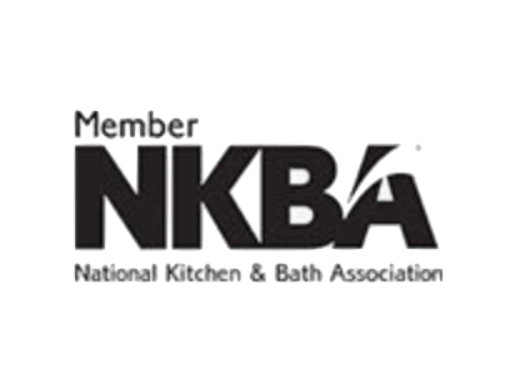An Ounce of Prevention

After more than a year dealing with COVID-19 restrictions and adjusted lifestyles, we’re certainly aware of how our lems we’re now living with as a result of rapidly changing climate focus on home has evolved. But, as frustrating as it is for homeowners dealing with product shortages and extended skilled or at best make sure they don’t happen again. trade wait times to get our home improvement projects completed, achieving our new interior living expectations is actually more complicated than an overly strained marketplace.
The pandemic itself has pulled back the screen on global trade dependency to expose a very complex and not so easily traceable supply chain, confirming just how closely connected our diverse world really is.
But, add the impact of climate-associated catastrophes in vulnerable regions where towns and their production facilities are completely shut down or even lost as a result of extreme water shortages or uncontrollable fires, contrasted with extreme flooding in other areas and overall habitat loss, and it’s pretty clear to see how vulnerable we are especially when we depend on a lot of these regions for our everyday goods and services.
We purchase food, clothing, building materials, home furnishings, electronics and pretty much everything that comes into our homes from global sources, so it seems a“no brainer”that it’s in our own best interest to be an active participant in reducing our global carbon footprint. But let’s take this a little closer to home. While on a global scale they may seem uneventful, here are some of the increasing problems were now living as a result of rapidly changing climate patterns, along with a little help on how to avoid them altogether of at best make sure they don't happen again.
Increase in unusual basement flooding
Especially in basements in low lying areas after heavy rainfall and rising ground water levels around our Lake Simcoe Region, unusual basement flooding is causing tremendous damage to walls, flooring and furnishings, leaving homeowners vulnerable to electrical hazards and health threats from residual bacteria and moulds, and resulting in expensive restoration costs and, in many cases, a very stressful insurance claim process.
Flood-proof your basement
For any below-grade living space make sure you have a sump pump with an inverter/charger battery backup system so when the power supply is disrupted, the sump pump will continue to work. (Don’t forget to advise your insurance provider — it may result in a policy discount.) Outside, keep gutters and drains clear and pump any water caught in drainage ditches close to your foundation away from your home. Make sure windows, doors, and any exterior vents or openings are properly flashed and sealed. Be vigilant with regular check-ups.
Inside, choose basement flooring such as porcelain tile, espe- cially if you’re in an area prone to flooding, and make sure it’s professionally installed over a high quality waterproof uncoupling underlay. Avoid laminates and wood floors (engineered or not).
Drywall acts like a sponge so it’s important to employ flood-proofing methods for restoring flood-damaged areas, in- cluding terminating drywall about four to five inches above the finished floor height. Use a PVC or vinyl baseboard rather than MDF or wood to cover the gap and resist water wicking should another flood occur.You might also consider installing wallboard in two sections – upper and lower, with a gap in between so that should future water wicking be a problem the lower section only would have to be removed. The gap could easily be covered with a removable decorative chair rail.
Prepare for extreme temperature fluctuations
Rapid changes in temperature and humidity cause interior wood to expand and contract causing wood interior doors and drawers to swell and stick, and are more noticeable now as this fluctuation increases over shorter periods.
Similarly, drapery fabrics may also absorb and repel moisture, affecting drapery lengths. These issues are easily addressed when the humidity is at its highest, but when humidity falls, the doors may have gaps after being adjusted.
Other interior finishing materials, such as hardwood and lam- inate flooring, react similarly so homeowners are noticing squeaks, unusual cupping, crowning and, in extreme situations, cracking. Humidity is reportedly responsible for 90-percent of flooring fail- ures but rushing out to purchase a dehumidifier is not the answer.
To keep hardwood floors in shape and to ensure manufacturers’ warranties aren’t voided, humidity levels should be maintained at 30- to 50-percent throughout the home. In these extreme tem- perature ups and downs, in order to keep your wood floors and furnishings in good condition, it’s wise to invest in a whole-home humidifier to regulate humidity throughout your home.
In winter, extreme freezing and thawing cause similar problems outside, where ice buildup causes damage to exterior evestroughs, concrete and vinyl siding and creates dangerous walkways. Check that your attic is properly insulated and sealed to avoid heat es- caping and causing ice dams to build up.
Check your home insurance policy
Canadian homeowners are increasingly facing higher home in- surance premiums as climate change-related natural disaster claims accelerate in terms of both frequency and cost, at a national rate of 42-percent over the past 10 years.
Homeowners should check their policy to ensure they are covered for associated events that might occur. Overland flooding insurance has been available in Canada since 2013 and according to the Institute for Catastrophic Loss Reduction every homeown- er should consider adding it to their policy even if they don’t live in a floodplain.












